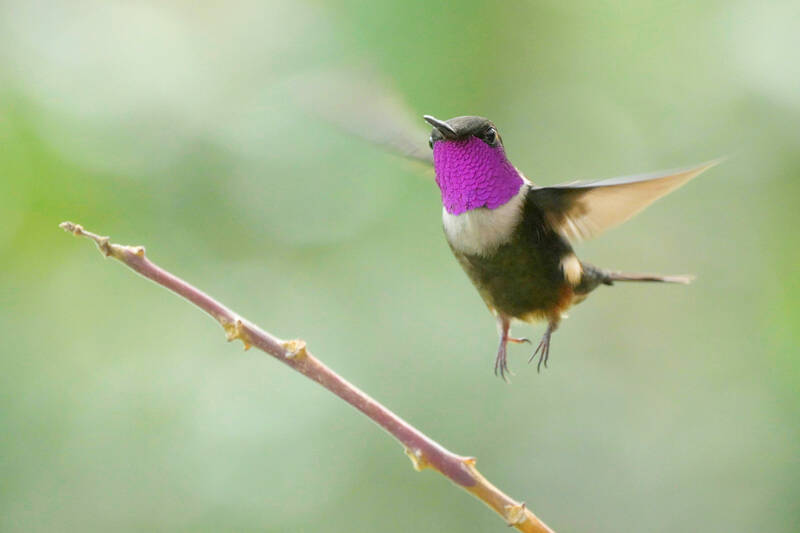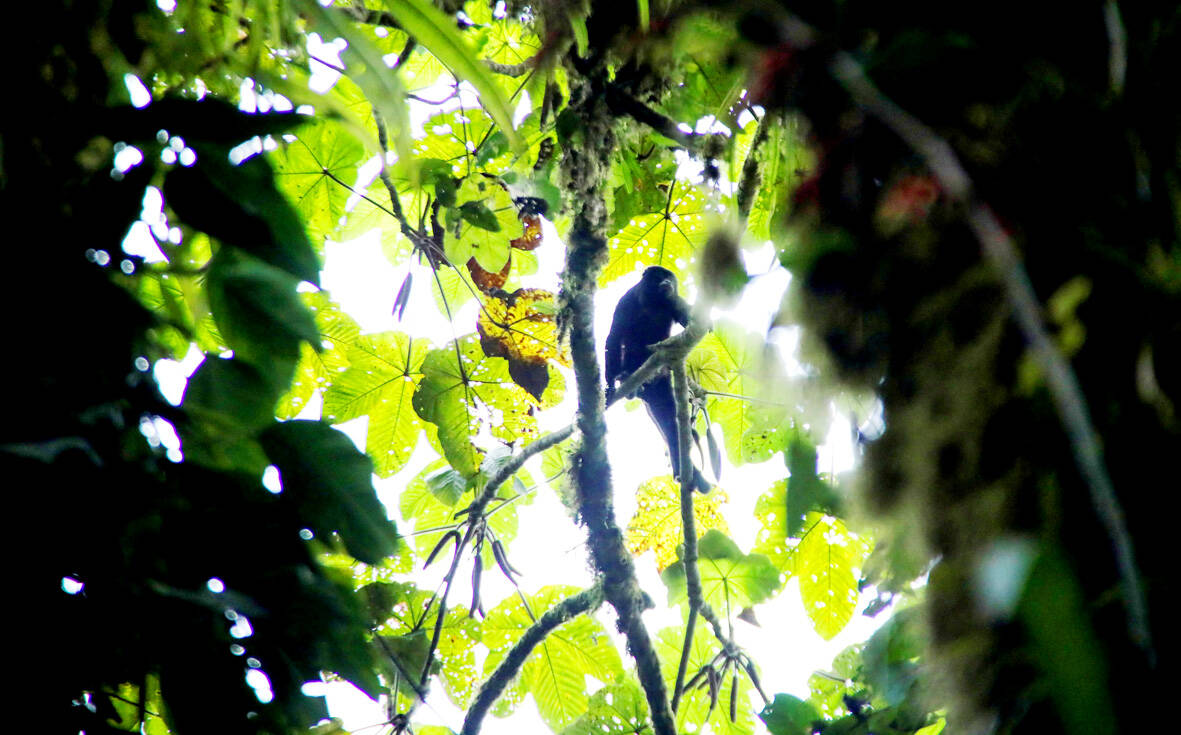A reedy pipe and a high-pitched trill duet against the backdrop of a low-pitched insect drone. Their symphony is the sound of a forest, and is monitored by scientists to gauge biodiversity.
The recording from the forest in Ecuador is part of new research looking at how artificial intelligence could track animal life in recovering habitats.
When scientists want to measure reforestation, they can survey large tracts of land with tools like satellite and lidar.

Photo: AFP
But determining how fast and abundantly wildlife is returning to an area presents a more difficult challenge — sometimes requiring an expert to sift through sound recordings and pick out animal calls.
Jorg Muller, a professor and field ornithologist at University of Wurzburg Biocenter, wondered if there was a different way.
“I saw the gap that we need, particularly in the tropics, better methods to quantify the huge diversity ... to improve conservation actions,” he said.

Photo: Reuters
He turned to bioacoustics, which uses sound to learn more about animal life and habitats.
It is a long-standing research tool, but more recently is being paired with computer learning to process large amounts of data more quickly.
Muller and his team recorded audio at sites in Ecuador’s Choco region ranging from recently abandoned cacao plantations and pastures, to agricultural land recovering from use, to old-growth forests.
They first had experts listen to the recordings and pick out birds, mammals and amphibians.
Then, they carried out an acoustic index analysis, which gives a measure of biodiversity based on broad metrics from a soundscape, like volume and frequency of noises.
Finally, they ran two weeks of recordings through an AI-assisted computer program trained to distinguish 75 bird calls.
The program was able to pick out the calls on which it was trained in a consistent way, but could it correctly identify the relative biodiversity of each location?
To check this, the team used two baselines: one from the experts who listened to the audio recordings, and a second based on insect samples from each location, which offer a proxy for biodiversity.
While the library of available sounds to train the AI model meant it could only identify a quarter of the bird calls the experts could, it was still able to correctly gauge biodiversity levels in each location, the study said.
“Our results show that soundscape analysis is a powerful tool to monitor the recovery of faunal communities in hyperdiverse tropical forest,” said the research published Tuesday in the journal Nature Communications.
“Soundscape diversity can be quantified in a cost-effective and robust way across the full gradient from active agriculture, to recovering and old-growth forests,” it added.
There are still shortcomings, including a paucity of animal sounds on which to train AI models.
And the approach can only capture species that announce their presence.
“Of course (there is) no information on plants or silent animals. However, birds and amphibians are very sensitive to ecological integrity, they are a very good surrogate,” Muller said.
He believes the tool could become increasingly useful given the current push for “biodiversity credits” — a way of monetizing the protection of animals in their natural habitat.
“Being able to directly quantify biodiversity, rather than relying on proxies such as growing trees, encourages and allows external assessment of conservation actions, and promotes transparency,” the study said.

June 2 to June 8 Taiwan’s woodcutters believe that if they see even one speck of red in their cooked rice, no matter how small, an accident is going to happen. Peng Chin-tian (彭錦田) swears that this has proven to be true at every stop during his decades-long career in the logging industry. Along with mining, timber harvesting was once considered the most dangerous profession in Taiwan. Not only were mishaps common during all stages of processing, it was difficult to transport the injured to get medical treatment. Many died during the arduous journey. Peng recounts some of his accidents in

“Why does Taiwan identity decline?”a group of researchers lead by University of Nevada political scientist Austin Wang (王宏恩) asked in a recent paper. After all, it is not difficult to explain the rise in Taiwanese identity after the early 1990s. But no model predicted its decline during the 2016-2018 period, they say. After testing various alternative explanations, Wang et al argue that the fall-off in Taiwanese identity during that period is related to voter hedging based on the performance of the Democratic Progressive Party (DPP). Since the DPP is perceived as the guardian of Taiwan identity, when it performs well,

The Taiwan People’s Party (TPP) on May 18 held a rally in Taichung to mark the anniversary of President William Lai’s (賴清德) inauguration on May 20. The title of the rally could be loosely translated to “May 18 recall fraudulent goods” (518退貨ㄌㄨㄚˋ!). Unlike in English, where the terms are the same, “recall” (退貨) in this context refers to product recalls due to damaged, defective or fraudulent merchandise, not the political recalls (罷免) currently dominating the headlines. I attended the rally to determine if the impression was correct that the TPP under party Chairman Huang Kuo-Chang (黃國昌) had little of a

At Computex 2025, Nvidia CEO Jensen Huang (黃仁勳) urged the government to subsidize AI. “All schools in Taiwan must integrate AI into their curricula,” he declared. A few months earlier, he said, “If I were a student today, I’d immediately start using tools like ChatGPT, Gemini Pro and Grok to learn, write and accelerate my thinking.” Huang sees the AI-bullet train leaving the station. And as one of its drivers, he’s worried about youth not getting on board — bad for their careers, and bad for his workforce. As a semiconductor supply-chain powerhouse and AI hub wannabe, Taiwan is seeing